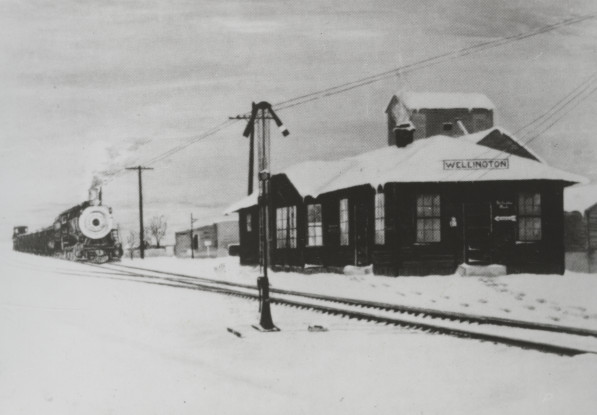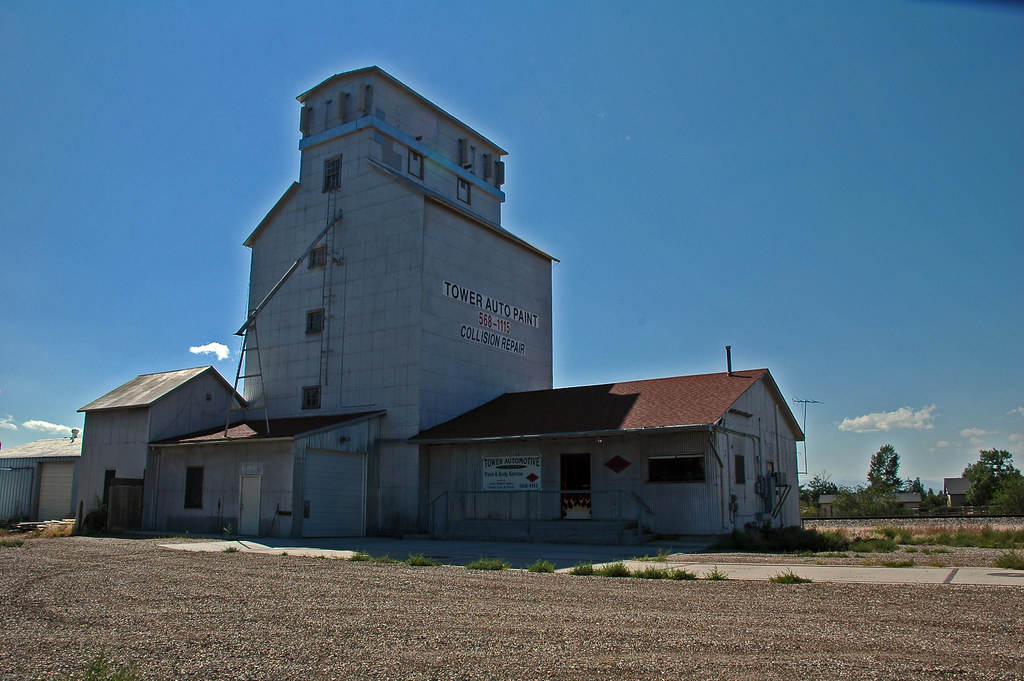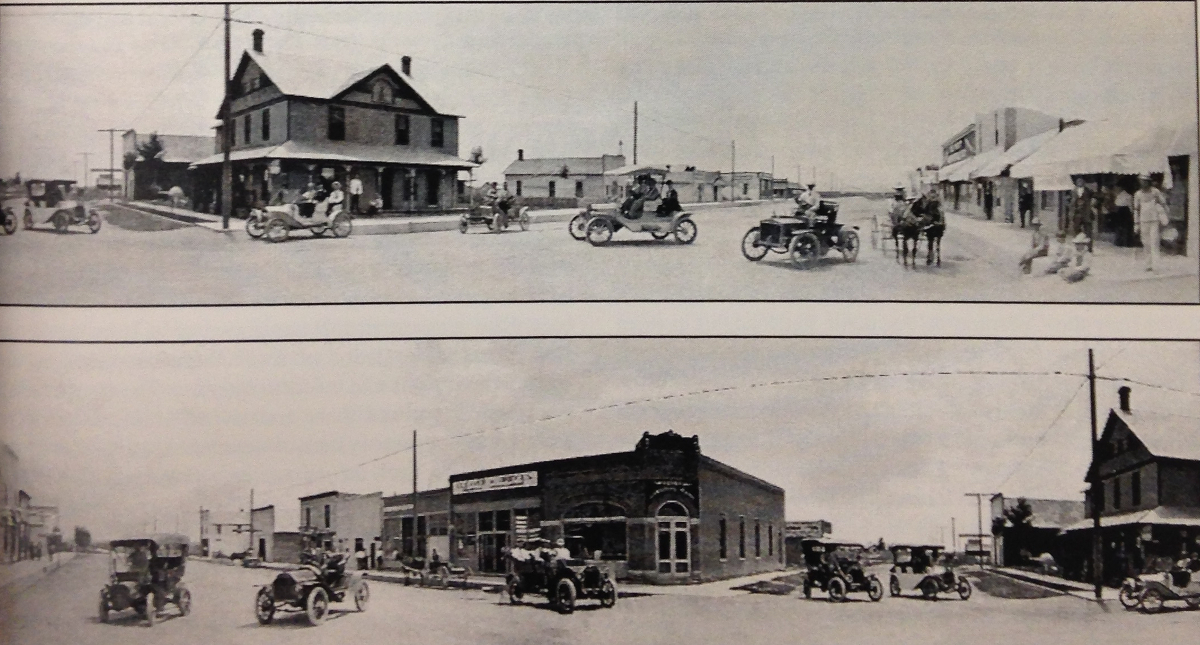 This cache is going to take you on a historic journey through "Colorado's Northern Gateway". This tour will take you to 4 different historic location. As you journey through history pay attention to each stop. You will be asked a series of questions at each location. In order to log this cache you must answer all questions and send them to me. Do NOT put answers in your log. Feel free to take picture but do not place any pictures that contain answers. Please have fun and enjoy the town of Wellington. ~~~~~~~~~~~~~~~~~~~~~~~~~~~~~~~~~~~~~~~~~~~~~~~~~~~~~~~~~~~~~~~~~~~~~~~~~~~~~~~~~~~~~~~~~~~~~~~~~~~~~~~~~~~~~~~~~~
This cache is going to take you on a historic journey through "Colorado's Northern Gateway". This tour will take you to 4 different historic location. As you journey through history pay attention to each stop. You will be asked a series of questions at each location. In order to log this cache you must answer all questions and send them to me. Do NOT put answers in your log. Feel free to take picture but do not place any pictures that contain answers. Please have fun and enjoy the town of Wellington. ~~~~~~~~~~~~~~~~~~~~~~~~~~~~~~~~~~~~~~~~~~~~~~~~~~~~~~~~~~~~~~~~~~~~~~~~~~~~~~~~~~~~~~~~~~~~~~~~~~~~~~~~~~~~~~~~~~

How Wellington was born: According to a National Geographic article on sugar, the average person consumed 4 pounds of sugar a year in 1700, 18 pounds by 1800 and a whopping 100 pounds of sugar annually by 1900. In other words, by the 20th century we had begun our national sugar fixation in earnest and farmers were taking note. In 1901, Loveland built a sugar production plant and though it bumbled along its first year, the entire surrounding region watched with keen interest and began to talk about building factories in Greeley (1902) and Fort Collins (1903). This talk of opening sugar factories lead to a sudden urgency to extend railroad lines in order to bring in the quantities of sugar beets needed for the factories. And it was with the extension of the Fort Collins Colorado & Southern line north into Boxelder Valley, where beets could be grown plentifully, that the town of Wellington was born.
By December 17, 1902, the Fort Collins Weekly Courier announced that the town of Wellington had been surveyed and platted and lots were in high demand. In fact, land between Fort Collins and Wellington shot up in price as people wanted in on the economic boom that the sugar factory would bring. Unfortunately, those looking for available land were hard pressed as those who already owned land in the area knew enough to hold on to their property. The same article from the Weekly Courier praised John Letford Smith, who had homesteaded 160 acres just east of where Wellington was to be. Smith had struggled without irrigation and with few neighbors for twenty years. The article goes on to praise him for all the grains and cattle he had been able to raise there over the years, a testimony to the bounty that can be wrought from the land for those who bend themselves steadfastly to the necessary work. The town of Wellington was an oil, coal and agricultural hub throughout the 1800s and became a stopping location for wagon trains, travelers and military movement between Cheyenne, WY, and Fort Collins, CO.
The town was founded in 1902, incorporated in 1905 and named after C.L.Wellington, an employee of the Colorado and Southern Railroad. Wellington is 10 minutes north of Fort Collins and 30 minutes south of Cheyenne. Wellington straddles the intersection of Interstate 25 and Highway 1 in the northeast corner of Larimer County making access to Wellington quick and convenient for visitors, residents and business needs. What started as a twinkle in the eye of a railroad traffic manager and an irrigation company, grew into the 116-year-old downtown we know today. Beginning in 1903, businesses and homes popped up all around town. Among the first businesses, even before the completion of the railway, was the Duncan & Hackleman Blacksmith Shop and the Corbin-Black Lumber Company, buildings still standing today on First Street. Next to follow was a general store, a post office, a schoolhouse, and the Colorado Telephone Company. Gravel was hauled from Boxelder Creek to grade the streets, and 400 shade trees were planted around town, for the first downtown beautification project. The 16 room Wellington Hotel opened for business in August of 1904, accommodating overnight guests and space in the dining room for special occasions. The first Mayor was elected in 1905, and the first town hall was built in 1909. The first water system was installed in 1907, with a filtration system made of gravel and charcoal. Electricity came to Wellington in 1916, which is also when downtown got its first street lamps, and it wasn’t until 1925 that plumbing came to town. The First National Bank of Wellington was open for business in September of 1905 (in the building now owned by North Poudre Irrigation), and John Cusack, the owner of said bank built a beautiful Victorian home on the east side of town. In 1905 the buildings that now house Soul Squared Brewing and Owl Canyon Coffee were built as a restaurant and retail shop. The Hager Harness shop built in 1909 is now the Polished Nail Spa, though you can still see the ghost sign for the Harness shop on the north side of the building. Wellington’s history is laced throughout downtown, in the many brick buildings and old houses that line Cleveland Avenue and First Street, and the information above only captures pieces of the first decade of Wellington’s history. ~~~~~~~~~~~~~~~~~~~~~~~~~~~~~~~~~~~~~~~~~~~~~~~~~~~~~~~~~~~~~~~~~~~~~~~~~~~~~~~~~~~~~~~~~~~~~~~~~~~~~~~~~~~~~~~~~

First Stage (The posted coordinates): The Wellington Train mural is displayed on the side of this building and the fence. It shows the rich history of Wellington, beets and trains. This will start you off on your tour. Please answer the following questions at this first stage. 1) What number can be found on the engine? 2) How many train cars is the engine pulling? 3) Look to the South and East. How many people are harvesting sugar beets? ~~~~~~~~~~~~~~~~~~~~~~~~~~~~~~~~~~~~~~~~~~~~~~~~~~~~~~~~~~~~~~~~~~~~~~~~~~~~~~~~~~~~~~~~~~~~~~~~~~~~~~~~~~~~~~~~~

Stop Number 1: Wellington has done an amazing job of reusing existing building to feature today's cultures. Here you will find a five-story grain elevator. It is now home to Wellington's first brewery. Old Colorado Brewing company. Answer the following: 4) How many barrels do you see? ~~~~~~~~~~~~~~~~~~~~~~~~~~~~~~~~~~~~~~~~~~~~~~~~~~~~~~~~~~~~~~~~~~~~~~~~~~~~~~~~~~~~~~~~~~~~~~~~~~~~~~~~~~~~~~~~~~~
 Stop Number 2: In 1909, a traveling photographer with a revolving camera took photographs of Wellington from the intersection of Cleveland and 2nd. In the photos you can see both the Wellington Hotel, built in 1903, (upper left) and the First National Bank of Wellington building. The bank building is so altered today that you might not realize it’s the same building. (picture 1) There is only one building listed on the National Register of Historic Places in Wellington. The 1st National Bank did so well thanks to beet farming, lamb raising, and a short oil boom, that it moved across the street in 1919. It’s this second building that was landmarked in 2000. (picture 2) Answer the following: 5) What does it say on the West side of the building? 6) Look across the street at the building labeled Old Flower Mill, this is the second location of the 1st National Bank. How many horses are out front?~~~~~~~~~~~~~~~~~~~~~~~~~~~~~~~~~~~~~~~~~~~~~~~~~~~~~~~~~~~~~~~~~~~~~~~~~~~~~~~~~~~~~~~~~~~~~~~~~~~~~~~~~~~~~~~
Stop Number 2: In 1909, a traveling photographer with a revolving camera took photographs of Wellington from the intersection of Cleveland and 2nd. In the photos you can see both the Wellington Hotel, built in 1903, (upper left) and the First National Bank of Wellington building. The bank building is so altered today that you might not realize it’s the same building. (picture 1) There is only one building listed on the National Register of Historic Places in Wellington. The 1st National Bank did so well thanks to beet farming, lamb raising, and a short oil boom, that it moved across the street in 1919. It’s this second building that was landmarked in 2000. (picture 2) Answer the following: 5) What does it say on the West side of the building? 6) Look across the street at the building labeled Old Flower Mill, this is the second location of the 1st National Bank. How many horses are out front?~~~~~~~~~~~~~~~~~~~~~~~~~~~~~~~~~~~~~~~~~~~~~~~~~~~~~~~~~~~~~~~~~~~~~~~~~~~~~~~~~~~~~~~~~~~~~~~~~~~~~~~~~~~~~~~
 Stop number 3: The last stop on the tour takes you to an old Victorian style house. This house was built by John Cusack. He was the president of the First National Bank of Wellington. He believed that the city of Wellington was destined to become one of the most important business points in Larimer County. Today this building houses somewhere that you can go and spend the day relaxing. Answer the following questions: 7) What is currently home to this house? 8) How many lights are on the black lamp north of the house?~~~~~~~~~~~~~~~~~~~~~~~~~~~~~~~~~~~~~~~~~~~~~~~~~~~~~~~~~~~~~~~~~~~~~~~~~~~~~~~~~~~~~~~~~~~~~~~~~~~~~~~~~~~~~~~~~ References: Dunn, Meg. “When Wellington Was Just a Twinkle in a Beet Farmer's Eye.” Northern Colorado History, 1 Jan. 2018, www.northerncoloradohistory.com/earlywellington/. “Our History.” Wellington Area Chamber of Commerce, www.wellingtoncoloradochamber.net/live-in-wellington/history-of-wellington/. ~~~~~~~~~~~~~~~~~~~~~~~~~~~~~~~~~~~~~~~~~~~~~~~~~~~~~~~~~~~~~~~~~~~~~~~~~~~~~~~~~~~~~~~~~~~~~~~~~~~~~~~~~~~~~~~~~
Stop number 3: The last stop on the tour takes you to an old Victorian style house. This house was built by John Cusack. He was the president of the First National Bank of Wellington. He believed that the city of Wellington was destined to become one of the most important business points in Larimer County. Today this building houses somewhere that you can go and spend the day relaxing. Answer the following questions: 7) What is currently home to this house? 8) How many lights are on the black lamp north of the house?~~~~~~~~~~~~~~~~~~~~~~~~~~~~~~~~~~~~~~~~~~~~~~~~~~~~~~~~~~~~~~~~~~~~~~~~~~~~~~~~~~~~~~~~~~~~~~~~~~~~~~~~~~~~~~~~~ References: Dunn, Meg. “When Wellington Was Just a Twinkle in a Beet Farmer's Eye.” Northern Colorado History, 1 Jan. 2018, www.northerncoloradohistory.com/earlywellington/. “Our History.” Wellington Area Chamber of Commerce, www.wellingtoncoloradochamber.net/live-in-wellington/history-of-wellington/. ~~~~~~~~~~~~~~~~~~~~~~~~~~~~~~~~~~~~~~~~~~~~~~~~~~~~~~~~~~~~~~~~~~~~~~~~~~~~~~~~~~~~~~~~~~~~~~~~~~~~~~~~~~~~~~~~~
Virtual Rewards 2.0 - 2019/2020
This Virtual Cache is part of a limited release of Virtuals created between June 4, 2019 and June 4, 2020. Only 4,000 cache owners were given the opportunity to hide a Virtual Cache. Learn more about Virtual Rewards 2.0 on the Geocaching Blog.